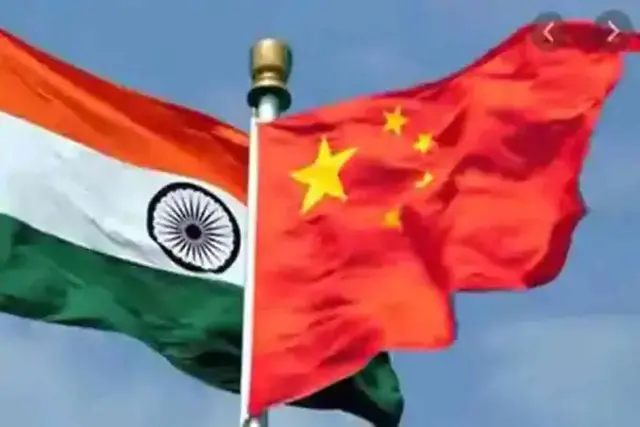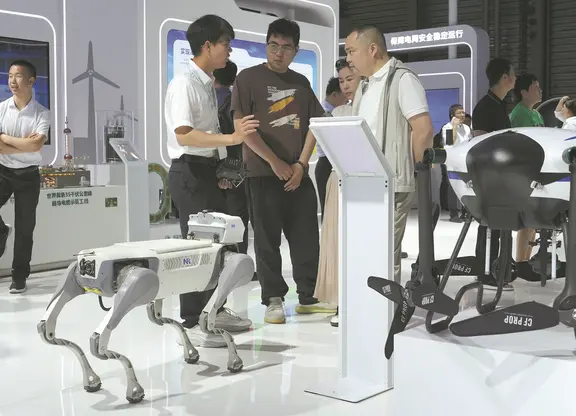By APD writer Alice
Thirty years ago, the Indian and Chinese economies were comparable in many aspects, but now the situation has changed. China's performance has surpassed that of India on almost every social and economic sphere.
With $14,100 billion in 2019, China's Gross Domestic Product (GDP) - the second largest in the world - is nearly five times that of India. China also integrates deeper into the global economy. It is the world's largest exporter, accounting for about 12.8% of global exports, compared to 1.7% for India.
China has better infrastructure and a more business-friendly environment. It has also surpassed India in social indicators. According to the Human Development Index 2019 of the United Nations Development Program, which was based on life expectancy, the age of years children attending school and per capita income based on purchasing power parity, China ranked 85th out of 189 countries, while India 129th.
So what explains China's superior performance relative to India's? The difference between the two countries took place in less than a generation. In the 1980s, the per capita income of both countries was roughly the same, about $250 per person. However, China's remarkable development during this period made a difference.
There are many explanations for why China has grown faster than India. China began implementing market-oriented economic reforms in 1978, more than a decade ahead of India. India faced a financial crisis and was forced to liberalize its economy in 1991.
The nature of China's reforms is also different. The country started with agricultural reform, giving farmers more control over their assets and better prices. This has increased the standards of living for the vast majority of Chinese.
At the same time, China has encouraged labor-intensive industries such as garment, toy and lightweight engineering goods production, areas where China's cheap labor has made it a competitive market. In addition, substantial inflows of foreign direct investment (FDI) originating from the Hong Kong Special Administrative Region and Taiwan (China) were poured into newly created special economic zones. As more workers moved to cities, China's urbanization accelerated, resulting in numerous economic activities.
China's urbanization rate has risen sharply, from 18% in 1978 to 59% in 2018 (compared with 34% in India today). China's manufacturing and manufacturing sectors have expanded in both size and sophistication after the country joined the World Trade Organization (WTO) in 2001. China has become the largest player in global supply chains for many commodities. This created more jobs and technology transfers as global companies established manufacturing operations in China.
Meanwhile, India's 1991 reforms removed some elements of the "Raj License" - an "armor" including administrative obstacles hindering businesses - and liberalized part of imports and foreign investment. These significant reforms boosted higher rates of investment, including foreign investment, but they ignored the agricultural sector, where the majority of the Indian population are living on. Therefore, these policies failed to create massive jobs like in China.
The service sector has expanded and is now the largest sector in the Indian economy. Many manufacturing activities were reserved for small-scale sectors, which could not be expanded in scale. India has failed to address the biggest obstacles to production expansion, notably the rigid labor law and problems from land acquisition.
These obstacles persist until today, preventing both Indian and foreign firms from investing in mass production, despite the large “Make in India” initiative launched by the Indian government in 2014. Thus, India's participation in global supply chains - which has been implemented since the 1990s - is limited.
In short, after its impressive initial boom in the early 1990s, India did not persevere with its reforms. In the past five years, India has just promoted important reforms such as the introduction of a biometric national identity system, a national goods and services tax, and bankruptcy law.
China has maintained a continuous process of reform, including institutional reforms such as allowing private, foreign and collective-owned companies to operate, privatizing State-owned firms, increasing intellectual property rights and more recently, expanding the digital economy.
In the 1990s, China began to increase spending on infrastructure and it now has the world's largest networks of expressways and high-speed railways, while India is still in the early stages of construction.
It is necessary to change the misconception that India's "deficit" in infrastructure relative to China is the main cause of India's underperformance. As Professor Yasheng Huang of the Massachusetts Institute of Technology’s Sloan School of Management pointed out, by the 1990s, China had a poor infrastructure but still developed rapidly. China built its infrastructure after - not before - more than a decade of high growth.
China's political system has resulted in a state that operates more efficiently than India's. This is a long-acknowledged fact that China has had a stronger state than India throughout its history, which has a better capacity to mobilize social resources for state purposes. The Chinese state is also more innovative, conducting more pilot projects such as the establishment of special economic zones. The differences in state capacity between the two countries are the main determinant of the differences in economic performance.
Although the Indian state has operated extremely efficient in big affairs such as organizing elections for 850 million voters, coping with natural disasters and administering a vast space program, New Delhi cannot perform core functions like providing basic public goods that have a great influence on people's daily life.
The gap between China and India is clearly seen in health and education. China has long had a widespread national network of health care services, starting with "barefoot" physicians and community clinics in the 1950s. It has also focused on public health care measures. Meanwhile, during this period, India has done nothing.
Even before China launched reforms in 1978, its life expectancy was 68, while that of India was 54. Although the gap has narrowed (China's life expectancy now is 76 while India's is 68), there are still significant differences in nutritional and other health-related indicators.
This means China has long benefited from a healthier and more productive workforce. Differences between the two countries in their focus on health remain until today. Currently, China spends more than 6% of GDP on health, while India 1.5%.
China has consistently invested more in education, leading to higher literacy rates, especially among women, and a higher proportion of high school and university students. Beijing has also spent more on research and development. Although India is trying to catch up with China, its lagging behind in education for decades has placed its workforce and technology development at a significant disadvantage.
(ASIA PACIFIC DAILY)
 简体中文
简体中文





